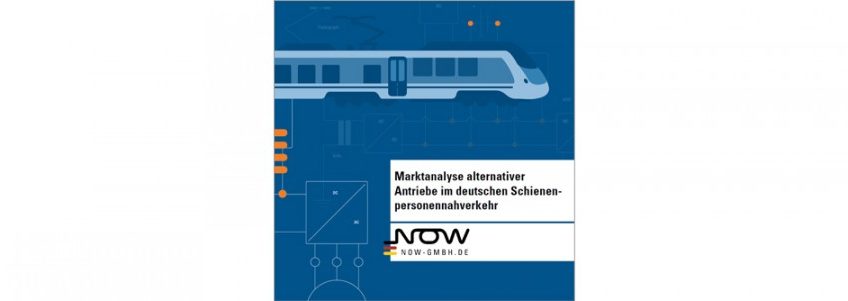Climate-friendly hybrid multiple units have the potential to replace the majority of diesel vehicles on rail routes without overhead cables. That was the conclusion of an NOW-commissioned market study by the Institute of Vehicle Concepts of the German Aerospace Center (DLR – Deutsches Zentrum für Luft- und Raumfahrt).
For the study: “Market analysis of alternative drives in German regional rail transport”, over 130 regional rail line networks were examined in Germany. DLR researchers illustrate possibilities for how rail transport can be shaped in a more environmentally-friendly way in future with innovative vehicle technologies.
In regional rail transport, overhead line routes perform best, which is why important primary routes are predominantly electrified. Planning, getting approval for and building overhead lines can be very time- and cost-intensive. Most of the time railway tracks, platforms or bridges must be rebuilt and brought up to modern technical standards in order to be able to install overhead lines. That is the reason why secondary lines in particular, are often either not or only partially equipped with overhead lines. Hybrid rail cars represent a low emission alternative to diesel vehicles: the electrically driven hybrid railcars draw their electricity either from the overhead line or independently from it – in the form of batteries or fuel cells.
Up to 2,500 hybrid multiple units nationwide
Diesel rail cars are used on over 400 German regional railway lines, with most of them operating in the larger states of Baden-Württemberg, Bavaria and North-Rhine Westphalia. DLR researchers determined how many railway vehicles with alternative drives could be used for these line networks. A nationwide market potential of up to 2,500 hybrid multiple units by 2038 was identified, according to the future share of overhead lines of the route network. Whether batteries or fuel cells are used is not only dependent on the features specific to the line. Apart from route distances, electrified sections or importance as a primary or secondary connection, in addition to the costs for vehicles, their operation and the adaptation of the infrastructure, also play a role.
Right type of drive often depends on the characteristics of the rail routes.
The current range of battery-supported hybrid multiple units is up to 100 kilometres, however this also depends on operating conditions. According to the deployment plan in the line network, batteries can be charged during journeys under existing and newly-built overhead line sections or at charging stations during stops in terminal stations. Hybrid multiple units with battery puffers are therefore mainly suited for lines which are easy to electrify, or at least in sections, or already have sections with overhead lines.
For routes with long sections without overhead lines and networks with only a few overhead line routes, multiple units with fuel cell drives are the better choice. This applies especially to rail connections in regions in which the renewably-produced hydrogen is easily available.
DLR authors see a need for further research including on so-called bi- or tri-modal hybrid rail cars, already operating in France and England. Such trains have two or three drive systems which are independent from one another. This can be for example, a hybrid drive, which gets its electricity from the overhead line or from a battery and is supplemented by an additional fuel cell drive to extend range.
Another potential application identified by DLR researchers for alternative train drives is for route reactivations. This also concerns the development of innovative concepts for the expansion of charging infrastructures and hydrogen refuelling stations.


